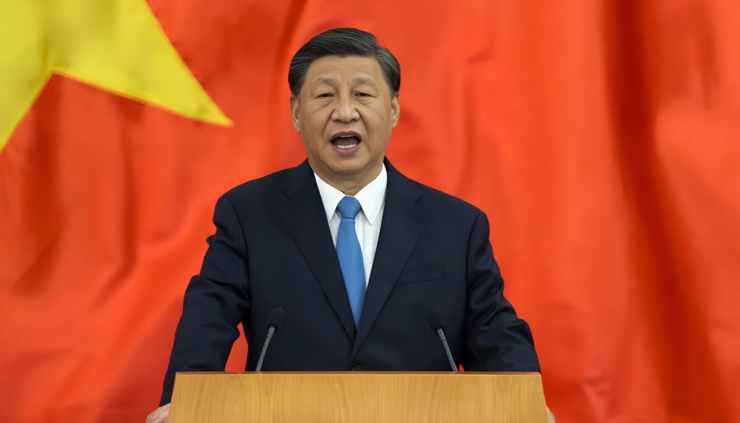In a significant escalation of the ongoing trade conflict, China has declared its intent to “fight to the end” following President Donald Trump’s recent threat to impose an additional 50% tariff on Chinese imports. The move has intensified fears of a broader global trade war and its potential repercussions on international markets.
The Chinese Commerce Ministry issued a sharply worded statement rejecting what it called “so-called reciprocal tariffs,” denouncing Washington’s approach as unilateral pressure tactics disguised as fairness.
Officials argued that China’s prior countermeasures—primarily in the form of tariffs—were lawful and aimed at defending national interests. The ministry further warned that more actions could follow if the U.S. continues with its aggressive trade posture. Emphasizing sovereignty and development as non-negotiable red lines, Beijing made clear that the standoff is about more than economics—it’s about global influence.
More than just a rebuke, China’s statement painted the U.S. move as a strategic error built on earlier misjudgments. If Washington pushes forward, Beijing vowed to escalate its response, echoing its now-firm stance: “China will fight to the end.”
Trump’s Ultimatum Raises Stakes in U.S.-China Trade Standoff
In a video interview, President Trump warned that unless China rolls back its recently announced 34% tariff hike by April 8, his administration will impose an additional 50% tariff on Chinese imports starting the following day.
This new threat adds to two previous rounds of duties: one aimed at punishing China’s alleged role in fentanyl trafficking, and another 34% increase unveiled last week targeting a wide array of goods. If enacted, the cumulative U.S. tariff rate on Chinese imports would surge to 104%—a level economists say could carry serious consequences for consumers and global trade.
Trump also declared that all diplomatic talks with China would be suspended if Beijing does not comply, adding further strain to an already tense economic relationship.
While the administration frames the move as necessary to address “decades of trade abuse,” analysts warn that continued tariff escalation could drive up prices for U.S. households and push China to redirect its exports to alternative markets. In turn, this could deepen Beijing’s trade ties with other major economies—particularly in the European Union—potentially leaving the U.S. more isolated in global supply chains.
Market Jitters Spread to Crypto as Protectionism Surges
The escalating U.S.-China tariff dispute is more than a bilateral showdown—it reflects a broader global turn toward economic protectionism, increasingly shaping investment strategies across traditional and digital asset markets.
As global equities wobble on fears of supply chain disruptions and weakened trade flows, crypto is once again being viewed both as a hedge against geopolitical uncertainty and a high-risk asset vulnerable to sentiment shifts.
Crypto markets—especially Bitcoin—have already shown sensitivity to macroeconomic shocks, with recent volatility mirroring investor concerns over inflation and trade contraction. If the trade war accelerates, analysts expect some capital rotation into digital assets as a hedge against fiat instability and policy unpredictability.
However, this isn’t a guaranteed boon for crypto. Escalating uncertainty could also suppress risk appetite, causing institutional investors to pull back from high-volatility assets. Furthermore, a fragmented global trade environment may complicate crypto adoption in regions pursuing regulatory harmonization—especially if tensions extend into digital infrastructure and cross-border payments.
Quick Facts
- China has pledged to “fight to the end” in response to U.S. tariff threats.
- The U.S. plans to impose an additional 50% tariff on Chinese imports, raising total tariffs to 104%.
- Global markets are experiencing increased volatility amid fears of a deepening trade war.
- Other Asian economies are exploring strategies to mitigate the impact of U.S.-China trade tensions.





